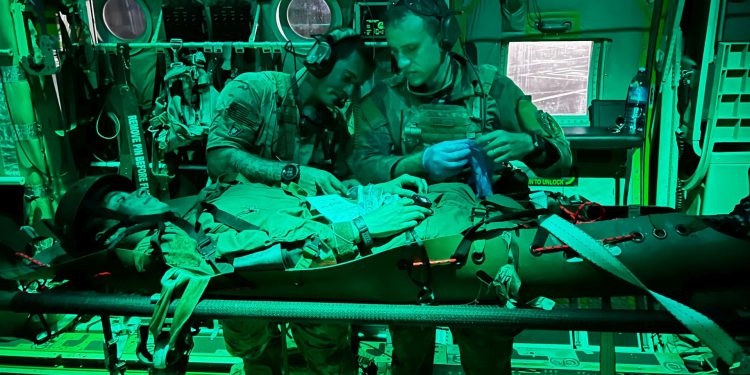One hundred New York National Guard airmen, including 80 from the 106th Rescue Wing, are participating in exercises with their Brazilian air force counterparts through Aug. 31.
The U.S. airmen are operating from the Brazilian air force base at Campo Grande, Mato Grosso do Sul, as part of Exercise Tapio, a Brazilian search and rescue and close air support exercise.
The training involves 1,100 Brazilian personnel and aircraft.
An official with the U.S. Southern Command said the exercise would “grow our collective ability to meet complex global challenges, counter threats and maintain regional security and stability.”
The U.S. component is led by Air Force Col. Jeff Cannet, the 106th Operations Group commander. It includes one HC-130J Combat King II search and rescue aircraft, three HH-60 Pave Hawk search and rescue helicopters, and two C-17 Globemaster III transport aircraft.
The 106th Rescue Wing is based at Gabreski Air National Guard Base in Westhampton Beach, New York.
Members of the New York Air National Guard’s 105th Airlift Wing flew the three helicopters to Campo Grande on the C-17 Globemaster III aircraft. The wing is based at Stewart Air National Guard Base in Newburgh, New York.
Also participating in the mission are personnel from the New York Air National Guard’s 274th Air Support Operations Squadron, which specialize in calling airstrikes, and the 107th Attack Wing, which flies the remotely piloted MQ-9 Reaper aircraft.
Two A-10 Thunderbolt pilots from the Maryland Air National Guard joined the team to offer their insight on close air support.
The Oregon Air National Guard contributed a four-airman, combat-controller team from the 142nd Wing, 125th Special Tactics Squadron, that specializes in operating in austere environments.
This is the second year the New York Air National Guard has participated in Exercise Tapio. In 2021, the exercise simulated war scenarios, including helicopter infiltration and extrication, rope rescues, separated survivor scenarios, and an urban operation with a vehicle extrication and mass casualty event.
This year’s exercise added the aerial refueling of the HH-60s by the HC-130J Combat King aircraft into the mix.
“It’s great to be taking part in Exercise Tapio again with a larger team than ever before,” Cannet said.
“The friendships and professional development have grown behind the scenes over the past year and seeing all that come together during this exercise has been rewarding. We look forward to growing this strong partnership for years to come,” he said.
The New York Air National Guard was invited to participate because of its partnership with Brazil’s military under the Defense Department’s National Guard Bureau State Partnership Program.
New York National Guard units participate in joint training and exchanges with their Brazilian counterparts to increase interoperability.
Recent interactions involved a visit by the New York Air National Guard’s 222nd Command and Control Squadron, a space operations unit, with their Brazilian counterparts. Brazilian leaders have also visited New York and observed security operations in New York City.
The State Partnership Program was created following the end of the Cold War and paired state National Guards with the militaries of former Soviet bloc nations.
Since then, the program has expanded. New York also has a partnership with the South African National Defense Force.











